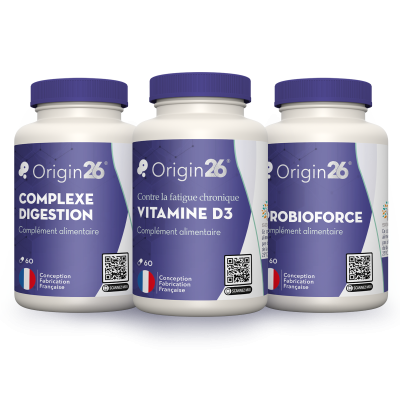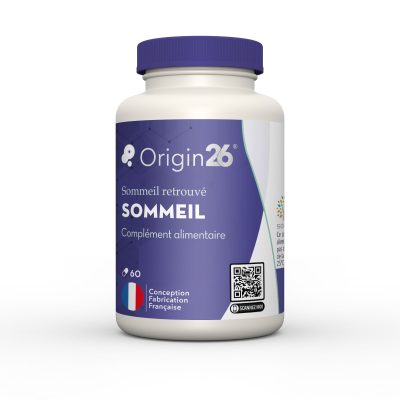Vitamins & Minerals Booster
125.30€
- Stimulating, toning and anti-infectious properties,
- remineralizing properties,
- Antioxidant and stimulating properties for the production of collagen,
- Cuts peptide bonds from proteins,
- Anti-carcinogenic, cardio-protective and anti-aging effects,
- anti-inflammatory effects,
- Contributes to the normal functioning of the immune system,
- Contributes to the absorption and storage of iron,
- Contributes to carnitine metabolism,
- Helps reduce fatigue.
Vitamins & Minerals Booster
Acerola is used mainly for its stimulating, toning and anti-infective properties. Its richness in minerals gives it remineralizing properties. Its high concentration of ascorbic acid, anthocyanins, flavonoids, and carotenoids, gives it antioxidant and stimulating properties for the production of collagen.
Originally from the tropical regions of South America (Peru, Venezuela, Brazil), the acerola comes from an evergreen shrub belonging to the Malpighiaceae family. Already used for centuries by the local population to combat various health concerns such as dysentery (infectious disease causing severe diarrhea), scurvy or even anemia (decrease in the number of red blood cells in the blood), acerola has been the subject of numerous scientific studies since the 1950s. These studies will be used in particular to highlight its nutritional and therapeutic qualities. Nowadays, considered a superfruit, the acerola is a highly sought after fruit for its health benefits.
Bromelain is defined as a combination of proteolytic enzymes, molecules also called peptidases or proteases. Like all proteolytic enzymes, bromelain is able to break down proteins. However, its very specific action distinguishes it from other proteolytic enzymes such as papain and trypsin. Indeed, bromelain is considered to be part of the family of cysteine proteases, which means that it has the particularity of cutting the peptide bonds of the proteins where the amino acid cysteine is found.
Quercetin is known for its antioxidant properties that fight free radical damage. In excess, these highly reactive species attack cells and DNA, promoting premature aging and the development of health problems such as certain forms of cardiovascular disease and cancer. This is one of the reasons why scientists believe that quercetin has anti-carcinogenic, cardio-protective and anti-aging effects.
In addition to its natural antioxidant capacity, quercetin also offers anti-inflammatory effects. It works primarily by inhibiting the NF-kappaB protein pathway, a molecule that plays a key role in controlling the expression of genes that code for pro-inflammatory cytokines. This anti-inflammatory action has been confirmed by several studies:
Vitamin C contributes to the normal functioning of the immune system.
Vitamin C, or ascorbic acid, is essential for the formation of elastic fibers (collagen) contained, for example, in the walls of blood vessels, the deep part of the skin (dermis), the skeleton, tendons, ligaments or gums. . It also contributes to the absorption and storage of iron, as well as the metabolism of carnitine.
Magnesium helps reduce fatigue.
Magnesium is a mineral salt that participates in more than three hundred chemical reactions in the body. Half of the magnesium in the body is found in bones and teeth. It is involved in the production of energy inside cells and is essential for the transmission of nerve impulses and muscle relaxation after contraction.
The vitamine B3
the name of niacin, also called vitamin B3 or PP, we group together two compounds, nicotinic acid and nicotinamide, which have the same properties as vitamins. However, when taken as dietary supplements in high doses, these two substances have very different uses.
In the body, niacin is used for the synthesis of two enzymes which are involved, among other things, in the production of energy from nutrients, in the synthesis of fatty acids and sex hormones, in the formation of red blood cells and in regulation of gene activity.
Vitamin E helps protect cells against oxidative stress.
Vitamin E is actually a family of eight substances, the most common of which is alpha-tocopherol. The functions of vitamin E in the body are poorly identified and cannot be explained solely by its antioxidant properties.
Iron contributes to the normal functioning of the immune system
Iron is a trace element necessary for our body. It enters into the composition of hemoglobin, a protein contained in red blood cells, which ensures the transport of oxygen, as well as that of myoglobin, a protein which allows the muscles to fix oxygen.
Calcium is the most abundant mineral salt in the body: our body contains more than a kilo of it, most of which (99%) is found in the bones and teeth where it contributes to their solidity. The rest is involved in many functions such as muscle contraction, passage of nerve impulses, blood coagulation, secretion of hormones or activation of enzymes.
Phosphorus is the second most abundant mineral in the human body. It is an important component of bones and teeth. In fact, 85% of the phosphorus in the human body is found in bones and teeth. In the body, it is found in the form of phosphates. Very abundant mineral in bone tissue and teeth. Keeps bones and teeth strong and forms cell membranes.
Most phosphorus is found in fish and seeds. Phosphorus requirements change throughout life. Phosphorus is recommended to preserve bone capital, ensure good growth or fight against fatigue.
Zinc contributes to the normal functioning of the immune system.
Zinc is an essential metal for the action of hundreds of enzymes in the body. It is, among other things, necessary for growth, sexual maturation, the functioning of the immune system as well as the renewal of the skin and hair.
Potassium is a mineral salt which, together with sodium, helps maintain acidity (pH) and the balance of fluids inside cells. In this, it contributes to the maintenance of blood pressure. It is necessary for the transmission of nerve impulses and muscle contractions, including those of the heart muscle. It is also involved in many chemical reactions of metabolism.
The vitamine B5
Pantothenic acid, or vitamin B5, is essential for the production of energy in cells, the transport of oxygen in the blood, as well as the synthesis of fatty acids, cholesterol and sex hormones. Vitamin B5 is both provided by food and produced by the intestinal flora.
Vitamin B6 contributes to the normal functioning of the immune system.
The term vitamin B6 refers to a family of six substances, the most commonly used of which is pyridoxine. Vitamin B6 is involved in the metabolism of amino acids and glycogen as well as in the synthesis of DNA (genes), hemoglobin, which carries oxygen in the blood, and many chemical messengers in the brain.
Vitamin B2 helps protect cells against oxidative stress.
Riboflavin, or vitamin B2, is necessary for the synthesis of two enzymes involved in energy production and nutrient utilization. These enzymes also protect the cells from aggressive substances (oxidants) produced during the chemical reactions of metabolism.
The vitamine B1
Thiamin, or vitamin B1, is involved in the transformation of glucose into energy and in the metabolism of amino acids. It is essential to the functioning of the nervous system and seems essential for memorization as well as intellectual faculties.
Copper contributes to the normal functioning of the immune system
Copper is a trace element that participates in many biochemical reactions in cells. It is essential for the formation of tendons and cartilage, the mineralization of bones, the production of red blood cells, as well as the synthesis of melanin (pigment coloring the skin and hair) and certain chemical messengers of the brain .
Vitamin A contributes to normal iron metabolism.
Under the name of vitamin A, we group together a family of substances with a structure and properties similar to one of them which serves as a reference, retinol. Vitamin A plays an important role in vision, in particular to allow the eye to adapt to darkness. It contributes to the health of the skin and mucous membranes, as well as to the regulation of the immune system. Vitamin A is also involved in bone growth and reproduction: it plays a fundamental role in the development of almost all the organs of the embryo.
Vitamin A is present in food, as it is or in the form of provitamin A of the carotenoid family, for example beta-carotene. Almost all of the vitamin A absorbed is stored in the liver.
Vitamin B9 helps reduce fatigue and normal functioning of the immune system.
Folic acid, also called vitamin B9 or vitamin M, is represented in foods in the form of polyglutamates, also called folate. Folic acid and folate are essential for cell multiplication and the regulation of gene activity. They participate in the production of red and white blood cells, in the renewal of the skin and the wall of the intestine, as well as in the synthesis of chemical substances that modulate the functioning of the brain. At the very beginning of pregnancy, folate is essential for the development of the nervous system of the embryo.
The vitamine B8
Biotin or vitamin B8, also known as vitamin H or B7, plays an essential role in the production of energy from nutrients, as well as in the synthesis of fatty acids and amino acids. It is both provided by food and produced by the intestinal flora.
Vitamin D3 contributes to the normal functioning of the immune system.
Vitamin D includes several substances, the two most common of which are vitamin D2 or ergocalciferol, produced by plants, and vitamin D3 or cholecalciferol, of animal origin and produced by the skin under the action of ultraviolet B rays. D is essential for calcium and phosphorus metabolism. It increases their absorption in the intestine and decreases their elimination in the urine, thus promoting the mineralization of bones and teeth.
Vitamin B12 contributes to the normal functioning of the immune system and to reducing fatigue.
Under the name of vitamin B12, we designate a family of substances of which the most used is cyanocobalamin. These vitamins, of a bright red color, contain cobalt. In combination with folate, vitamin B12 is involved in the synthesis of DNA and fatty acids, in the production of energy inside cells and in the functioning of the nervous system. It is provided both by food and by the intestinal flora. In the body, it is stored mainly in the liver.








Reviews
There are no reviews yet.